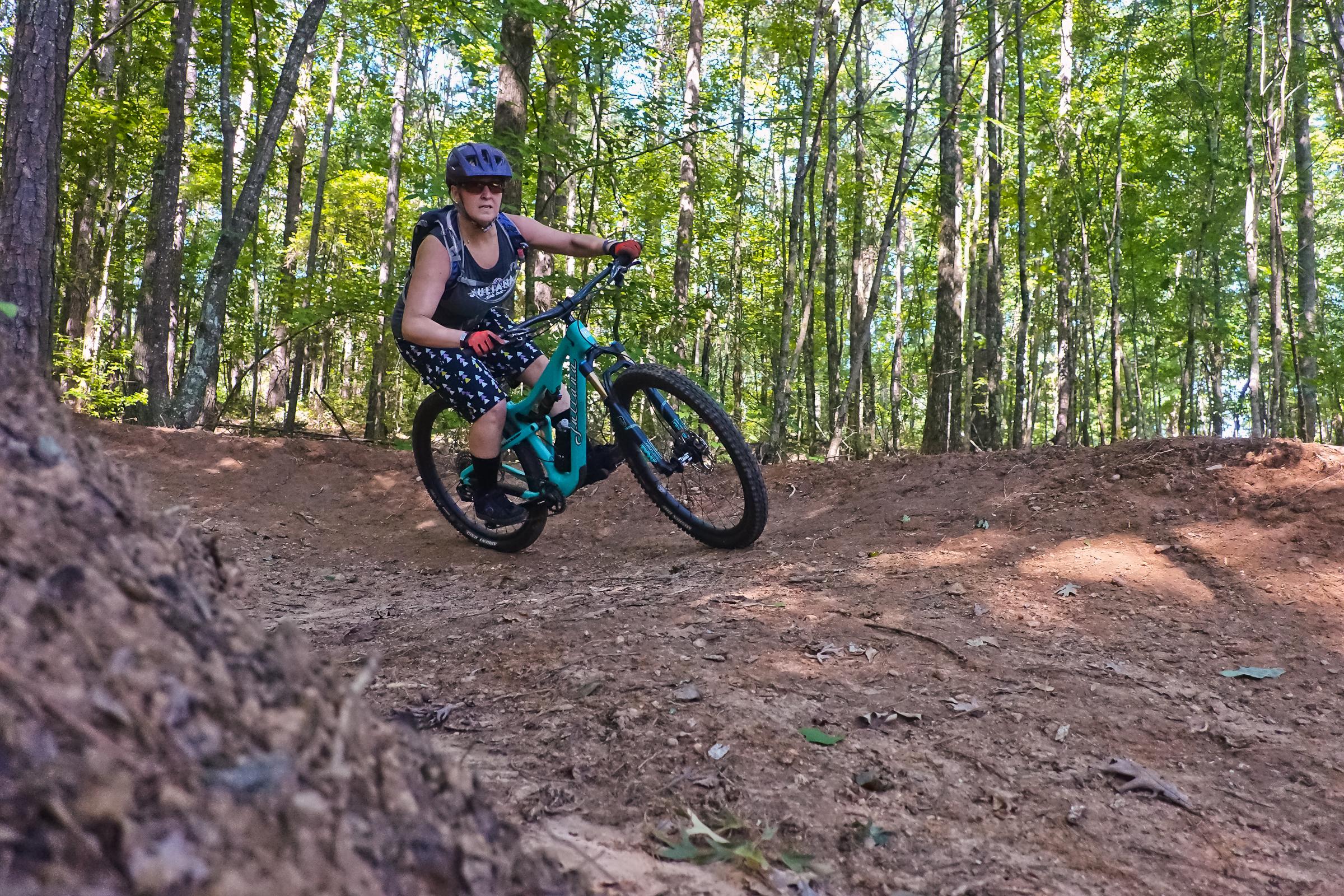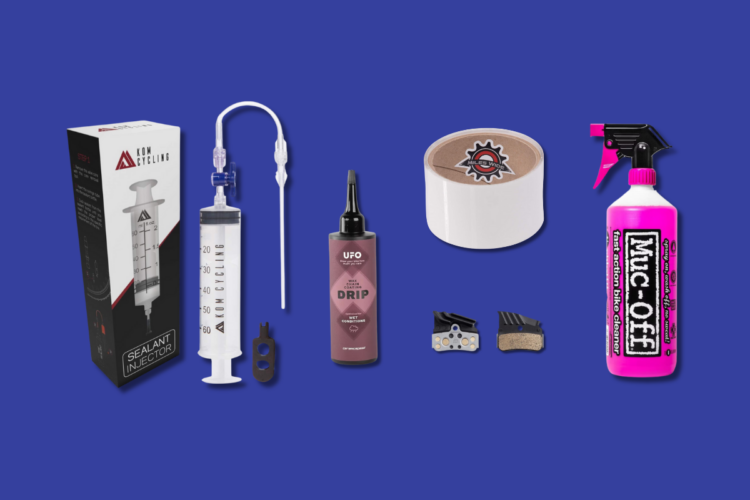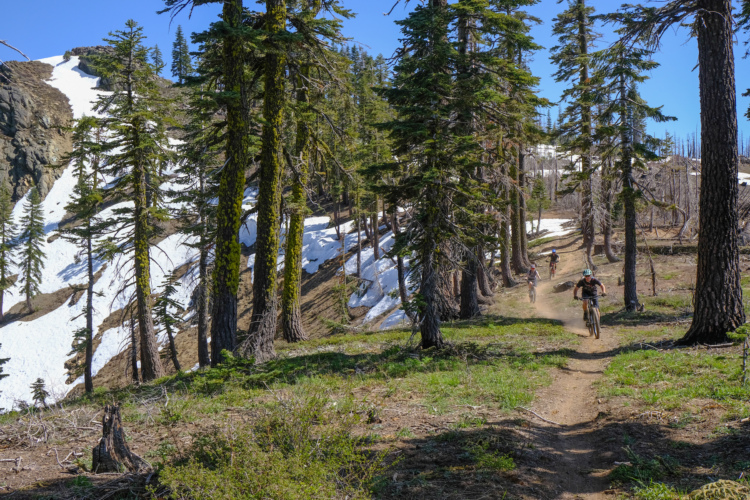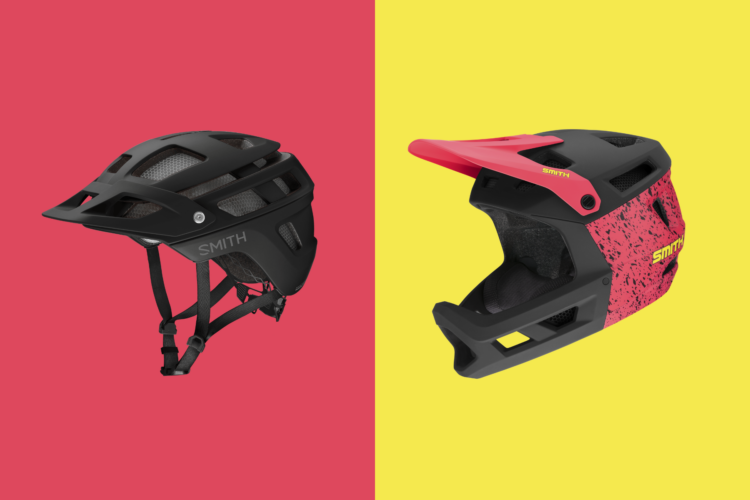
I’ve written a number of pieces about mountain bike trends over the years, but one article in particular caught my attention recently. The opening sentence reads like a dare from my past self: “I have a feeling this article is going to be a lot more interesting (or perhaps comical) when you read it five years from now.” (Go ahead and read it now. I can wait.)
Well, it’s been two times five years (plus one) since that was written, so what’s changed? As it turns out, everything… and also nothing.
“Carbon fiber is a material that’s here to stay”
Yes. And also, no. Eleven years ago there were still significant holdouts when the conversation turned to carbon. Some were worried carbon bars, bikes, and wheels weren’t durable or safe enough for hard riding, plus there was the added cost to consider. Most riders seem to have moved past questions of durability — eleven extra years of long-term testing will do that — though cost concerns remain.
Looking back, perhaps the most surprising development is the return of aluminum bikes, another trend we’ve written about since. Today, brands seem to default to carbon when it’s time to roll out a new bike, or update a frame. Then, after a season or two, more affordable alloy models are made available.
Eleven years later, more engineers and brand managers are recognizing the hidden environmental costs of carbon fiber, adding another hairline crack to the wonder material’s patina. I still agree with my past self that carbon fiber is a material that’s here to stay in our garages, and also sadly our landfills, though the case for its use isn’t quite as strong as it used to be. That’s especially true as the “weight doesn’t matter” camp continues to grow louder. And no, I never would have predicted the rise of the anti-weight weenie.
“Stage races and multi-day epics […] will only get bigger”
There’s no doubt that more and more riders are embarking on multi-day bikepacking epics as gear becomes lighter, cheaper, and more readily available (current supply chain issues notwithstanding). Stage racing has seen an uptick as well, with more riders choosing to participate just for fun, rather than for the competitive side of things.
What I failed to foresee is the rise of FKT attempts. Clearly Covid lockdowns played a role, as athletes and regular riders alike sought solo challenges. Thanks to ubiquitous tech like satellite trackers, online services, and live streams, FKTs and generally big, rad rides will likely continue to grow.
“Over the long term 29er bikes should definitely stick around”
Talk about an understatement! Seriously, if anyone can legitimately say they predicted downhill 29ers in 2010, I would like to speak to them about my stock portfolio. Back then, few were even talking about 27.5″ wheels; the “other” wheel size was 26, and it was winning big.
Of course, the latest wheel size trend involves mixing wheels, and it’s interesting to think about where that might lead. There’s been plenty of time to experiment with larger wheels than 29er, and the industry tried smaller wheels in the time since, only to return to 29ers. I think I’ll double down and say yes, 29ers will definitely stick around for a while longer.

“It seems odd no one thought of riding wider bars before…”
In 2010, mountain bikers were “gushing” about how great wider handlebars felt. At Interbike that year, Syncros showed off a gag handlebar that was 1000mm wide in a nod to the ridiculousness of the wide-bar hype at the time. To their surprise, younger riders who saw the bars were anxious to give them a try. Our gear editor at the time, Syd, commented that 800mm must be as wide as it gets. I joked that brands were locked in an arms race for the widest bars, and someone would certainly come out with 820s. Which they did.
While plenty of riders today are onboard the wide-bar train, a few are beginning to question the logic. Or at least, riders seem to be reaching their limits when it comes to ever-wider bars. Gerow lays out a good case for settling on a “wide-enough” handlebar, and there are plenty of pros who are finding the same thing. As far as trends go, I predict this one might finally reverse itself a bit, though it’s had a much longer run than I ever imagined.

“More sustainable trails but also trails that are even more fun to ride”
It’s hard to believe, but eleven years ago the idea of purpose-built mountain bike trails was somewhat of a novel one. Early bikers rolled on existing hiking trails, which tended to be narrow and often included technical features like you know, stairs and exposed tree roots. Coincidentally (or not), it was in May of 2010 that Hans Rey gave a presentation at the IMBA World Summit about Flow Country trails. It was the first time I had heard the term “flow trail,” though certainly by that time many machine-built, flowy trails were being constructed.
In the intervening years, flow trails have ebbed and flowed (get it?) in terms of notoriety, but there’s no denying that purpose-built mountain bike trails are booming, now even more so due to the pandemic. Professional trail builders are booked years out, often with lead times longer than new bikes, and every summer another handful of ski resorts cut the ribbon on fresh, lift-served dirt. Are trails “even more fun to ride” today than they were in 2010? Oldish guy here, but I would say yes. Yes they are.
One surprising twist in the bike trail building boom is the newfound agreement that bike trails can be good for local economies. That, in turn, has made municipalities not just willing to allow trail projects to move forward, in many cases they are helping finance them. Never in my wildest dreams did I think purpose-built bike trails would become so popular and welcomed by communities all around the world.
How’d we do?
Like I said at the beginning, there has been a ton of progress and change in mountain biking over the past eleven years. Yet looking back, it’s clear we’re still on the same path we started down in 2010, which is the same one the Repack riders bombed down in the 1970s. And I predict it’s the same one we’ll continue down in the decades to come.

















11 Comments
Nov 1, 2021
Instead, it was built with perfect grade reversals everywhere and plays with the contour of the mountain to make it both more sustainable and more fun. It's a multi-use trail, so it isn't full-on bike-centric, but it's a big improvement over trails of yore for sure.
Nov 2, 2021
Nov 1, 2021
As a consequence, planners are omitting many of the sustainable aspects such as consideration for native plant ecology, soil composition, drainage control, and usage, to name a few.
I think we need to ask ourselves what sustainable trails have actually become to be in the last ten years. They certainly aren't sustainable if they need constant (not periodic) maintenance and policing when the weather is poor.
Nov 4, 2021
Second, its not hard to build trails with machines that aren't too wide. It takes a we bit of pre-planning and a skilled crew, but its very possible. Rock Solid out of Michigan has been doing a good job of this and have been successfully making trails that is bucket or two wide for awhile now. It is important to, as you said, pre-plan for environmental needs. Some locations, processes or trail standards are better at this than others. The collaborative approach used in the Northern Midwest, for instance, has shown its ability to allow the creation on trails that minimize flora impacts.
Third, and this ties to the item above, not all trail standards are created equally. You linked to California's below and that is one of the worst out there. By default it allows too wide of trails, doesn't specify the correct level of pre-planning, bans some of the most important methods of reducing social group infighting (regular choke points/trail narrowing, secs. 6.3.3.4-6.3.3.6 are woefully inadequate; user management techniques) and doesn't include the need to consider speed differentials into the design process. Oh, and it likes to default multi-use trails to MTB/equestrian/human trails, which are a maintenance nightmare.
Your point is well taken, but the issues about impacts and sustainability are solvable, even with a breakneck speed of trail construction. Its going to take advocates doing a few things like avoiding the California trail standards like the plague, applying more rigorous pre-construction flora/fauna review and giving a MAXIMUM impact width for machine construction.
Nov 1, 2021
Sep 23, 2022
Nov 10, 2021
Nov 1, 2021
Nov 11, 2021
There is no "one guideline to rule them all". The American Trails guidelines and the respective tutorials/how-tos cover almost everything but aren't MTB specific. They cover sustainable trails, trails in small properties, considering nature, etc. Add to that MN DNR's guidelines for pre-building environmental/user considerations. The USFS trail details are hard to pass up, even though their guidelines are really generic.
Sep 23, 2022
Sep 23, 2022